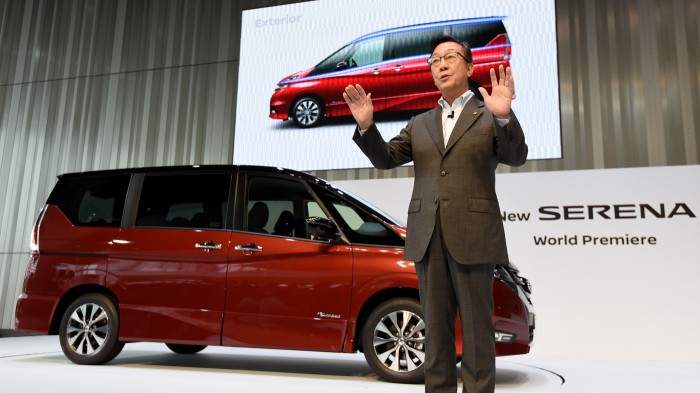Nissan ProPilot Joins a Bumpy Road for Autonomous Driving Aids
With Tesla’s Autopilot under intense scrutiny, it seems like a strange time to launch an autonomous driving feature. But that’s exactly what Nissan has done, unveiling its new ProPilot system less than two weeks after we learned of the first fatal autonomous Tesla crash.
Nissan’s system, which will be available on new Serena minivan models in Japan as soon as next month, is able to take control of accelerating, braking, and steering. The automaker claims that it can handle highway driving as well as stop-and-go traffic in a single lane.
Much like Tesla’s Autopilot, the system is reported to use an onboard camera and image-processing software to recognize vehicles and road markings. The system controls the position of the car relative to the vehicle in front, while driving at speeds between 20 mph and 60 mph.

Nissan’s executive vice president, Hideyuki Sakamoto, has been quick to point out the limitations of the technology, explaining that “these functions are meant to support drivers, and are not meant as self-driving capabilities." The point isn’t to be able to take your hands off the wheel, according to Nissan—though that is possible.
Like Tesla’s system, when the driver removes their hands from the wheel, a warning is shown on the dashboard. However, unlike Autopilot, ProPilot will deactivate if the driver doesn’t replace their hands upon the wheel after several seconds. That final feature may prove to be a strength for ProPilot in the eyes of regulators.
Three Tesla crashes involving Autopilot are now under investigation by the National Highway Traffic Safety Administration, though only one proved fatal. In that incident, the driver was killed when his car hit the side of truck that the autonomous system failed to detect. Data from the vehicle suggests none of the car’s controls were used by the driver immediately before impact.
The recent events surrounding Tesla’s Autopilot make it an awkward time to roll out an autonomous driving features of any kind. Over the coming weeks, the National Highway Traffic Safety Administration and the National Transportation Safety Board will consider evidence regarding the recent crashes—potentially publishing guidelines that shape the future of self-driving cars.
(Read more: Reuters, Bloomberg, Pocket-Lint, “Tesla Investigations Could Question Viability of Semi-Autonomous Driving,” “Fatal Tesla Autopilot Crash Is a Reminder Autonomous Cars Will Sometimes Screw Up”)
Keep Reading
Most Popular
How scientists traced a mysterious covid case back to six toilets
When wastewater surveillance turns into a hunt for a single infected individual, the ethics get tricky.
The problem with plug-in hybrids? Their drivers.
Plug-in hybrids are often sold as a transition to EVs, but new data from Europe shows we’re still underestimating the emissions they produce.
What’s next for generative video
OpenAI's Sora has raised the bar for AI moviemaking. Here are four things to bear in mind as we wrap our heads around what's coming.
Stay connected
Get the latest updates from
MIT Technology Review
Discover special offers, top stories, upcoming events, and more.